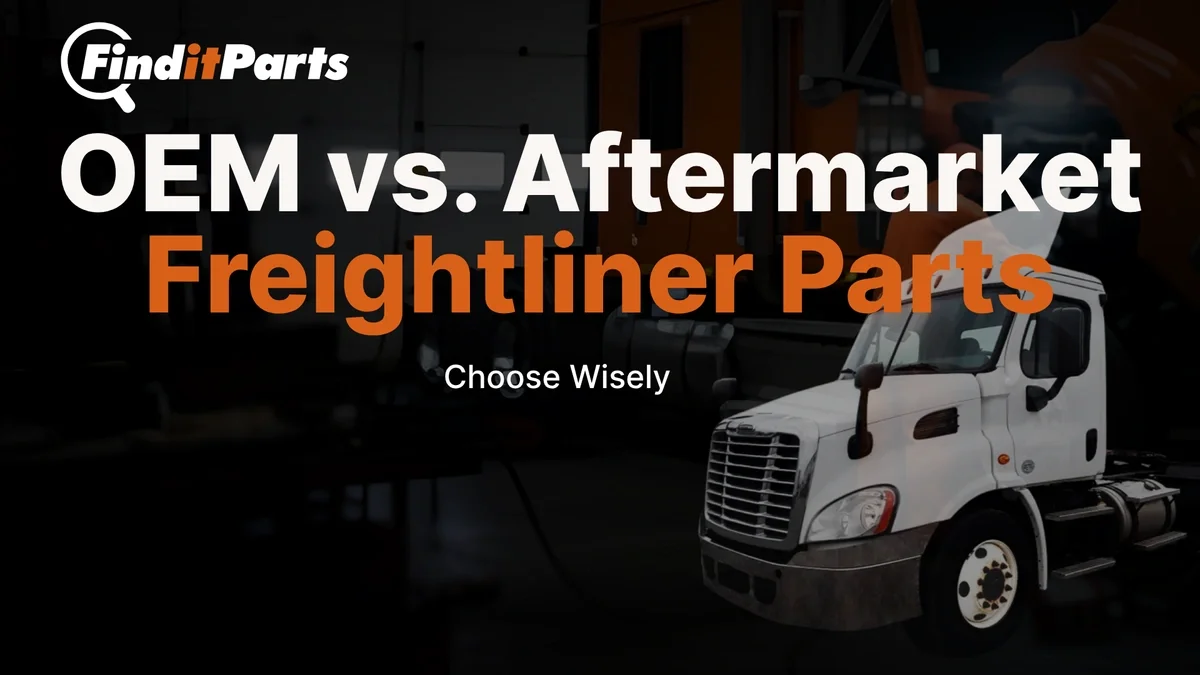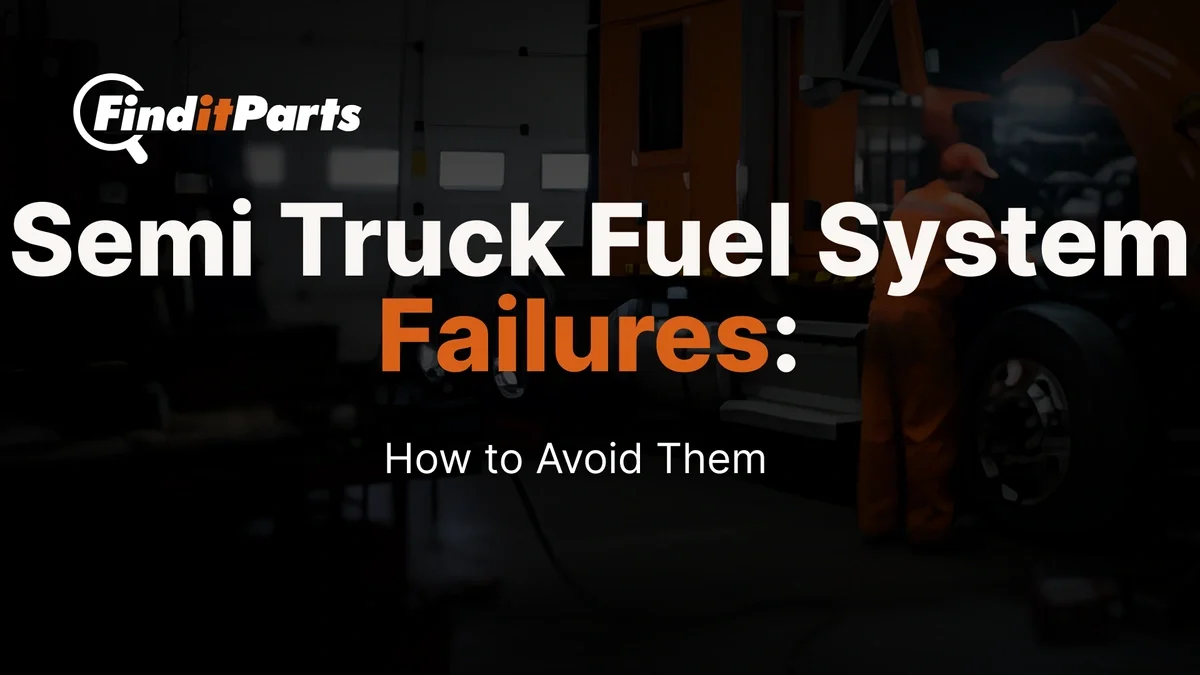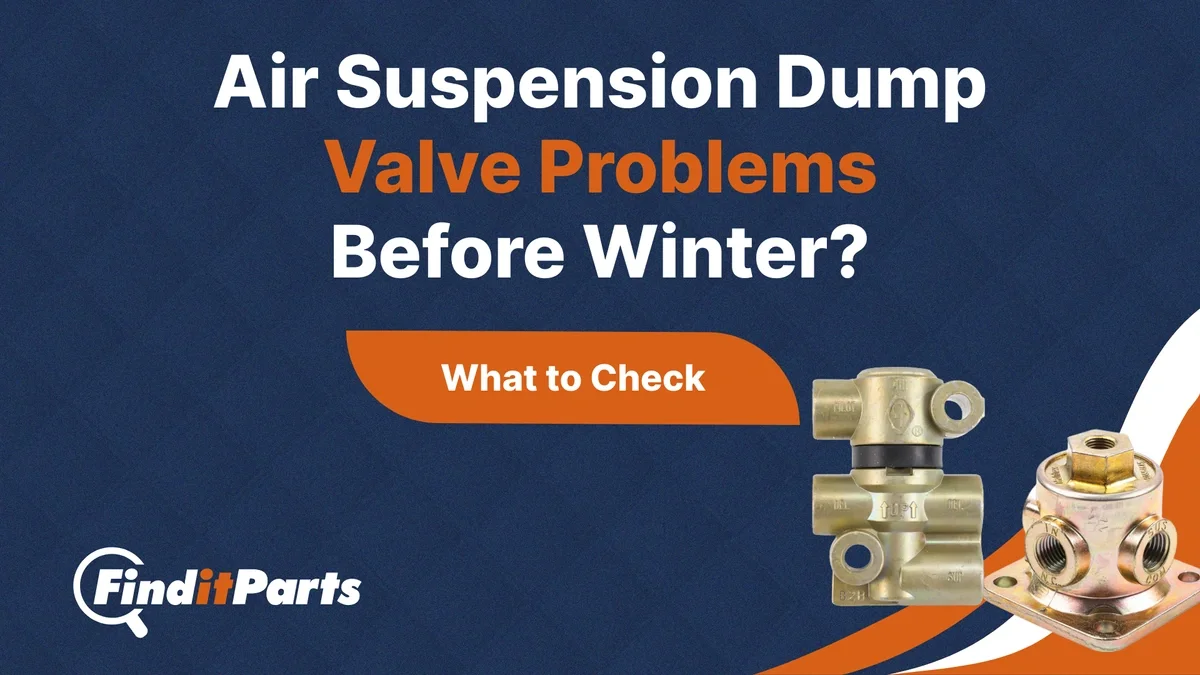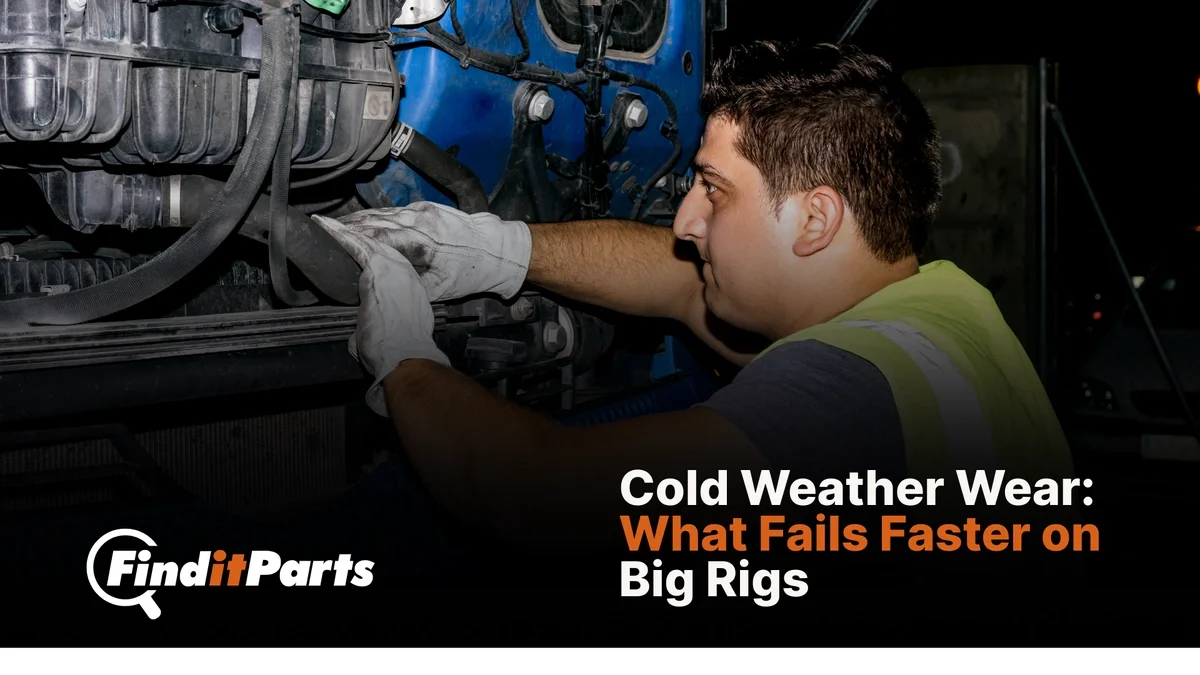Need help? We're here!
(888) 312-8812 Login SignupShould You Choose OEM or Aftermarket Freightliner Parts
October 23, 2025

Introduction
When a Freightliner is off the road, every hour matters. Whether you’re running one rig or managing a fleet, the choice between OEM and aftermarket parts isn’t just a cost question. It’s about getting the job done right the first time. Pick the wrong part and you’re looking at more time in the shop, more headaches, and maybe another replacement down the line.
OEM and aftermarket parts each have their place. The key is knowing when one makes more sense than the other. If you're after reliability, performance, and a smooth install, each option offers different benefits depending on the situation. Here’s how to break it down and make the right call for your Freightliner.
What Are OEM Freightliner Parts?
OEM stands for Original Equipment Manufacturer. These parts are made by or approved directly by Freightliner. They’re built to the same specs and quality standards as the ones that came on the truck when it rolled out of the factory.
Here’s why a lot of technicians, especially those working in dealerships or managing larger fleets, tend to stick with OEM parts:
- Exact fit and function. There’s no guessing if it will bolt in or plug up. It’s built for your Freightliner from the start.
- Built to design specs. If the OE team signed off on it, you know it checks the boxes for durability and performance.
- Faster installs. It's built to match the original layout, which saves time when you're under the gun.
OEM parts make the most sense when safety and long-term reliability are non-negotiable. That includes things like brake chambers, emissions gear, or suspension components. For example, replacing brake chambers on a Cascadia with a Freightliner-approved chamber gives you that extra layer of confidence everything will stay in spec. It’s also a good idea when your customer demands factory parts or you’re handling repairs tied to warranty records.
Understanding Aftermarket Freightliner Parts
Aftermarket parts are made by companies that aren’t Freightliner but design components that match or even improve on the original design. That doesn’t make them knock-offs. Many aftermarket producers have earned reputations for building strong and reliable parts that meet or beat OE standards.
Some big advantages with aftermarket parts include:
1. A wider range of price points. Depending on your choice of brand and materials, you might find a solid option at a better price.
2. Better availability. Sometimes the OEM version is backordered, discontinued, or hard to get your hands on fast.
3. More variety. Performance versions, new materials, or creative designs can offer something better suited for heavy loads, hot weather, or rugged terrain.
Say you’re dealing with a minor part like a cab switch or AC vent in an older Freightliner. That’s where an aftermarket blower motor or mirror glass can work just fine—and cost less. But be cautious. With more variety comes more variance in quality. Some brands make excellent parts and back them with solid service. Others might look similar but fall short in life span or fit. Check reviews and don’t just trust a name without verifying what’s behind it.
Key Considerations for Choosing Between OEM and Aftermarket
The right choice between OEM and aftermarket often comes down to the needs of that particular job. It’s about striking the right balance—time, cost, and expected performance.
Here are some things to think about:
- Cost and quality. OEM parts are often more expensive because they’re factory-approved and carry the Freightliner label. Aftermarket covers more pricing levels. That can help on tight budgets if you're willing to dig into ratings, specs, and user reviews.
- Warranty and support. OEM parts generally come with support from the factory. Some aftermarket brands also offer good coverage, but there’s more variation. Be sure to check return policies and whether the part is backed in case of failure.
- Availability and speed. Freight downtime is money. If an OEM part is on backorder, the job may need to move forward with an aftermarket alternative that fits right and holds up.
For example, replacing a leaking axle seal might usually be an OEM job. But if a premium-grade aftermarket seal in stock can keep your truck off the sidelines, it could be the smarter move.
It all depends on how fast you need it, what’s riding on the part, and how much wear it’s likely to take.
Tips to Help You Make a Smart Choice
You’ve got choices. But the right call usually comes from asking the right questions, using the right tools, and trusting proven sources.
Try these strategies next time you’re hunting for parts:
1. Use VIN lookup tools. This ensures you’re starting with parts designed for your exact truck year and setup. It cuts down on guesswork and wasted returns.
2. Check reviews and installer feedback. Real-world experience beats a glossy label. You'll hear about fitment issues, quality problems, or parts that overperform.
3. Compare specs closely. Just because it's marketed as a match doesn't mean the tolerances, materials, or test ratings are close enough. Look at the build, not just the price tag.
4. Think long-term, not just short-term savings. Even with a higher sticker price, a longer-lasting component cuts overall operating cost and labor time. It’s especially true for critical moving parts like air dryers or brake hardware.
5. Lean on professionals. People on the parts counter or in the garage who’ve tackled this repair know what brands work and which ones don’t. That small conversation can save big money or hours of frustration.
With all the options out there, relying on experience and smart tools takes the guesswork out of it—and puts uptime back in.
Choosing What's Right for Your Freightliner
There’s no universal answer, because no two repair jobs are the same. You’ll find situations where OEM is the clear winner, like repairs that affect safety systems or repairs that need to line up with warranty logs. Then there are cases where aftermarket just makes more financial sense, especially for older trucks, less complex components, or when quick turnaround is critical.
The better move isn’t always the most expensive. And it's not always sticking to one path. Blending OEM and aftermarket choices based on what's best for performance and cost often works better than blindly choosing one side.
If you’re a fleet manager planning replacement cycles, OEM might help you check the boxes across your service logs. If you’re repairing a long-running rig with some cosmetic or comfort issues, aftermarket could save hundreds without affecting performance.
The smartest operators figure out which parts truly matter—and which ones leave room for flexibility. And finding the right partner to deliver those choices when and how you need them is part of staying ready for the road ahead.
Ready to make your next parts purchase with confidence? Explore top-quality OEM Freightliner parts at FinditParts Inc. to get your rig back on the road faster, with the reliability and fit you count on.



